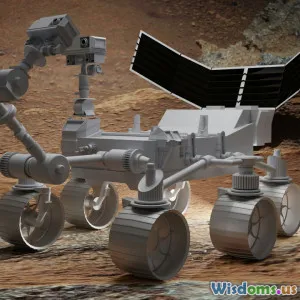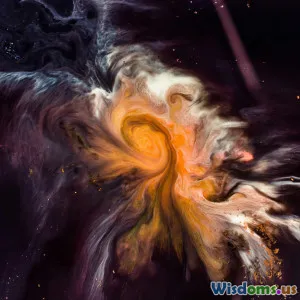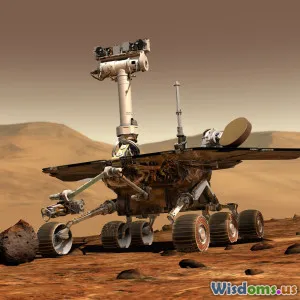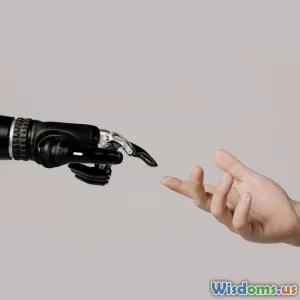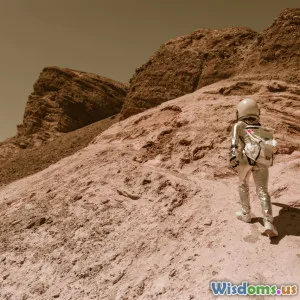
Mars Exploration: Lessons from Science Fiction
8 min read Explore how science fiction shapes Mars exploration ideas, inspiring real missions and innovation for humanity's future on the Red Planet. (0 Reviews)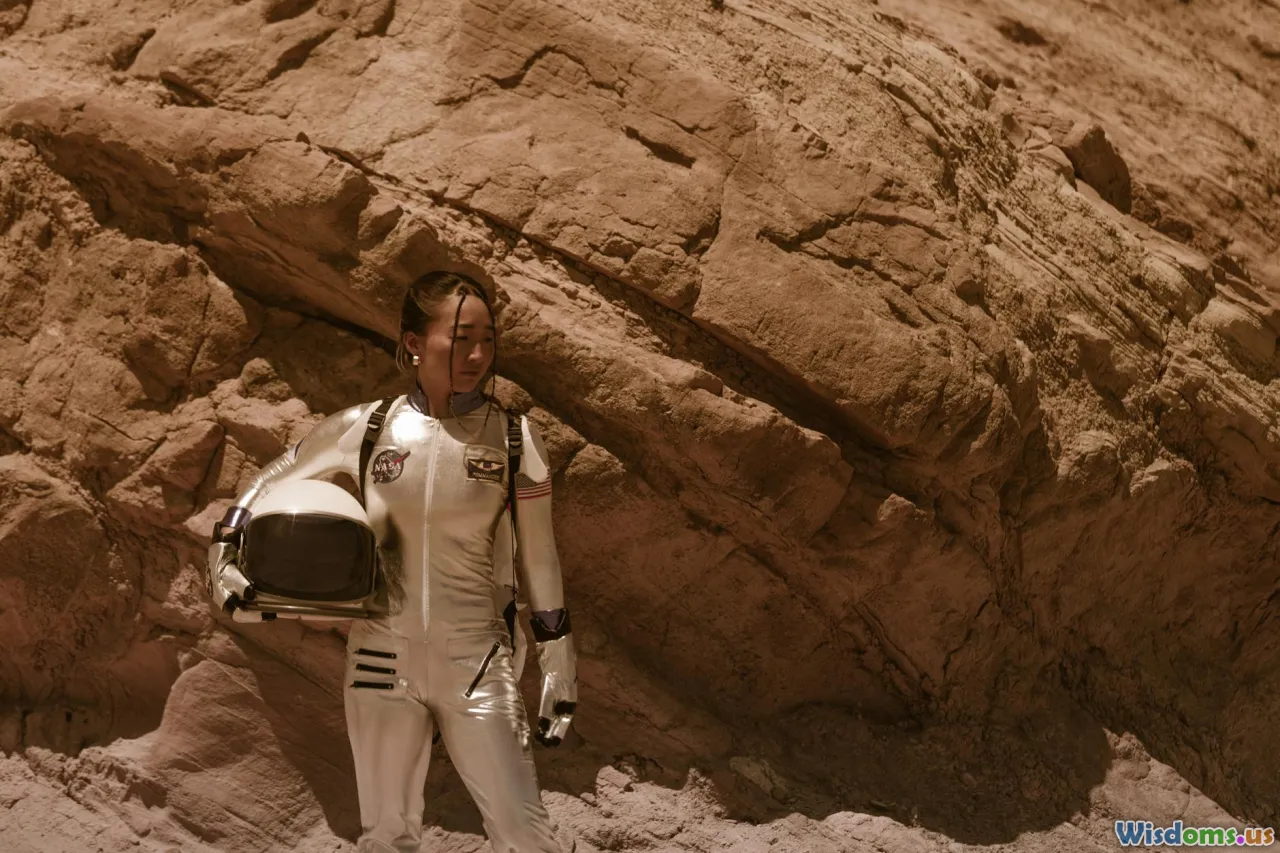
Mars Exploration: Lessons from Science Fiction
Introduction
Ever since the human imagination turned toward the stars, Mars has stood out as the most tantalizing neighbor—a world both alien and strangely familiar. From the richly imagined tales of Ray Bradbury’s The Martian Chronicles to Andy Weir’s scientifically detailed The Martian, science fiction has fueled enthusiasm and shaped our expectations of Mars exploration. But this isn’t just fanciful dreaming; science fiction often precedes and inspires scientific advances, providing valuable lessons for how humanity approaches the daunting challenge of reaching and inhabiting Mars.
In this article, we dive deep into the symbiotic relationship between science fiction and Mars exploration. We will explore how imaginative futures have influenced the design of Mars missions, inspired innovation, and framed our vision of what life beyond Earth could look like.
The Sci-Fi Blueprint: Shaping Missions Before They Happen
Early Visions and their Influence
Long before the first rover landed, early science fiction writers envisioned what it would mean to visit and live on Mars. H.G. Wells’ The War of the Worlds (1898) vividly depicted Martian invasions, reflecting societal anxieties but also drawing attention to the Red Planet’s mysterious allure. The impact of such timeless works cannot be understated; they fostered public excitement and a collective cultural imagination around Mars.
Ray Bradbury’s The Martian Chronicles (1950) combined poetic storytelling with reflections on humanity’s repeated histories of colonization and environmental conquest. This nuanced perspective influenced not only how we consider human settlement on Mars but also raised awareness about preserving the Martian environment—a theme increasingly relevant today in discussions about planetary protection.
Visualization Pioneering Technology
Science fiction has often served as a visual laboratory for potential mission profiles. Andy Weir’s The Martian (2011) meticulously detailed survival strategies on Mars, offering a narrative that hinged on realistic science—including habitat design, resource management, and chemical engineering. NASA has referenced realistic sci-fi portrayals such as Weir’s extensively to design engineering experiments and public outreach.
Moreover, pioneering films like Total Recall (1990) and The Expanse series blend speculative technology with current scientific understanding, keeping public imagination vivid. These narratives push engineers and scientists to rethink rover autonomy, in-situ resource utilization (ISRU), and habitat self-sufficiency.
Lessons for Real Mars Exploration
Inspiration for Autonomous Robotics and Rovers
Many science fiction stories envision autonomous robots aiding or supplementing human explorers. This vision aligns with NASA’s deployment of rovers like Curiosity and Perseverance, which carry advanced AI and autonomous navigation systems. The ability of these rovers to scout terrain, conduct geology studies, and even synthesize oxygen from the Martian atmosphere is reminiscent of science fiction’s robotic helpers, showing a direct line from fictional concepts to practical tools.
The Challenge of Life Support and Sustainability
Stories such as Kim Stanley Robinson’s Mars Trilogy deal extensively with terraforming—transforming Mars’ barren landscape into a habitable world. While full-scale terraforming remains science fiction for now, the novel’s rich discussions about atmosphere manipulation, resource cycles, and biospheres provide valuable frameworks for thinking about life support systems.
Robinson’s portrayal of gradual adaptation echoes NASA’s concept of ISRU, where vital resources like water and oxygen are harvested from Mars itself rather than transported from Earth. This approach is critical for sustainable habitation and reducing mission costs.
Ethical Considerations on an Alien World
Science fiction frequently probes ethical dilemmas, including planetary protection—avoiding contamination of Mars by Earth microbes and vice versa. Michael Crichton’s Sphere and Kim Stanley Robinson’s works highlight the risks of bringing terrestrial biology to an alien ecosystem.
These narratives underscore the lessons underpinning current NASA protocols designed to prevent forward contamination. This ethical mindfulness is essential to preserve Mars for scientific discovery and respect any indigenous life, an area which sci-fi forces us to confront imaginatively before real scenarios arise.
Psychological and Social Dynamics
Mars missions will subject crews to isolation, confined habitats, and communication delays. Science fiction often delves into the psychological impact of long-term space travel, giving insights on crew dynamics, motivation, and mental health — issues central to NASA and private ventures like SpaceX planning Mars expeditions.
Andy Weir’s The Martian demonstrates human ingenuity and emotional resilience, while other works envision team conflicts or symbiotic cooperation. These stories have inspired psychologists and mission designers to develop comprehensive support systems for mental well-being in extraterrestrial contexts.
Bridging Fiction and Reality: Education and Public Engagement
Science fiction’s role extends beyond inspiration to education. Popular sci-fi media captivates wide audiences, making complex scientific challenges accessible and exciting. Mars exploration benefits significantly from a public eager to support funding and participation.
Initiatives like NASA’s Mars simulations or outreach programs intentionally tie sci-fi themes with STEM education, aiming to cultivate the next generation of explorers and engineers. Drawing connections from fiction to real-world science fosters curiosity and critical thinking, which benefits not just space exploration but scientific literacy broadly.
Conclusion: A Collaborative Future Shaped by Imagination and Science
Science fiction is more than entertainment; it is a vital incubator for ideas, approaches, and ethical guidelines crucial for Mars exploration. Fusing imaginative scenarios with empirical research allows humanity to prepare comprehensively for the numerous challenges an interplanetary journey entails.
As we stand on the brink of sending humans to Mars, the lessons embedded in science fiction—from technological concepts to philosophical reflections—offer invaluable guidance. These stories nurture our ambition and sharpen our planning, ultimately proving that the human spirit of exploration thrives where curiosity and creativity converge.
Our path to the Red Planet invites a partnership between scientists, storytellers, and dreamers. Harnessing the full power of science fiction can make what once seemed impossible, a reachable and sustainable future among the stars.
References
- Bradbury, R. (1950). The Martian Chronicles.
- Weir, A. (2011). The Martian.
- Robinson, K.S. (1992-1996). Mars Trilogy.
- NASA Mars Exploration Program: https://mars.nasa.gov/
- Excerpts on ethical planetary protection: NASA Planetary Science Division guidelines
- https://www.nasa.gov/feature/nasa-missions-learning-from-fiction-for-spacecrew-health
Rate the Post
User Reviews
Popular Posts











